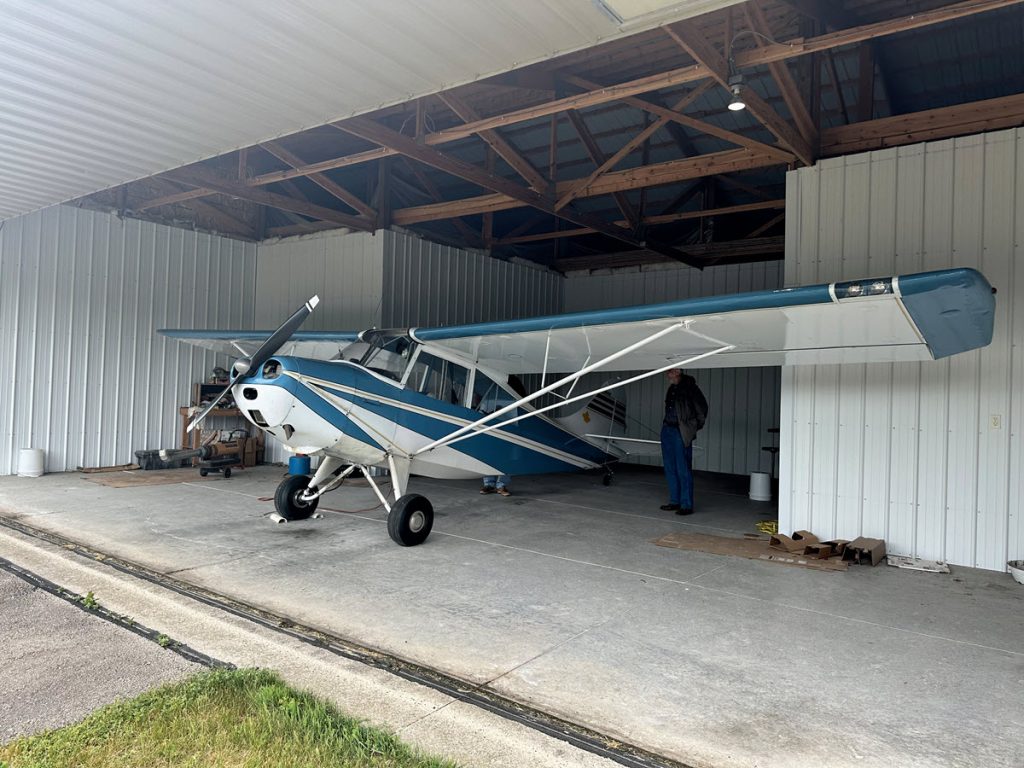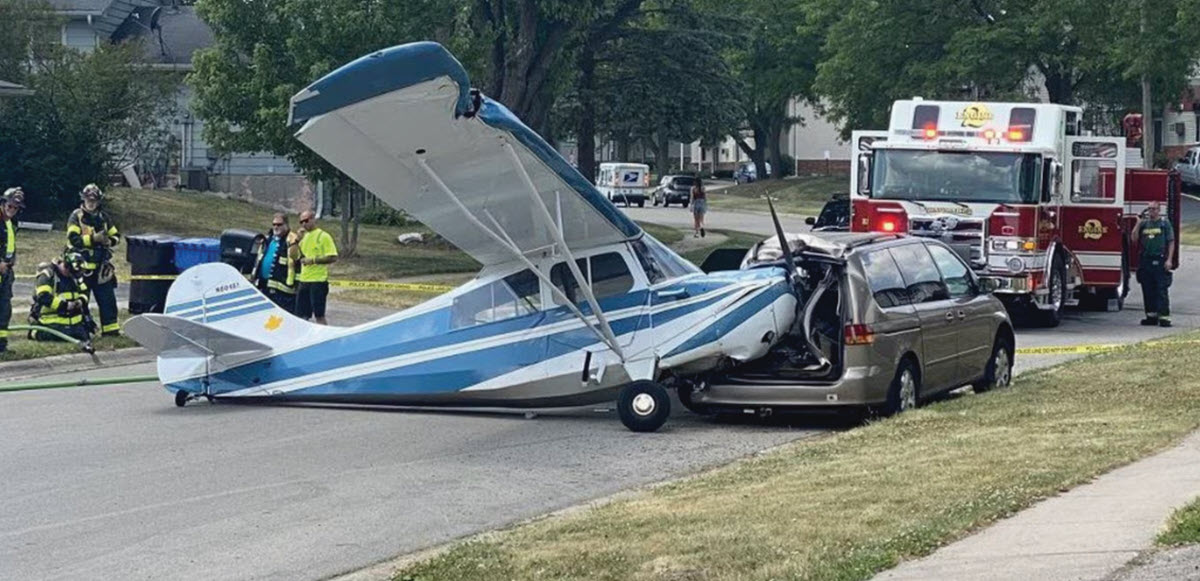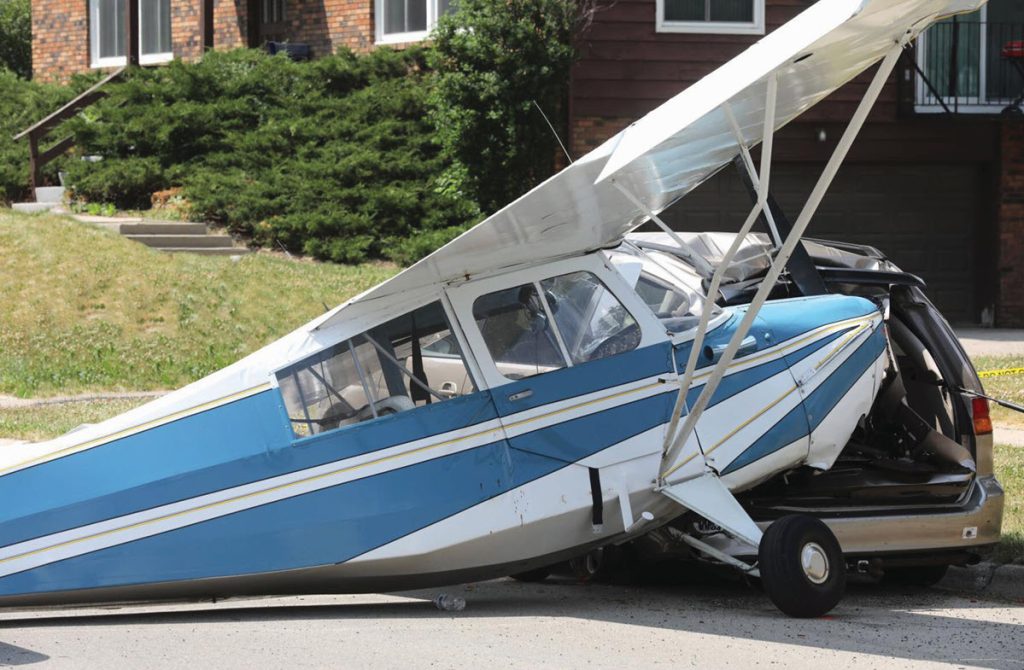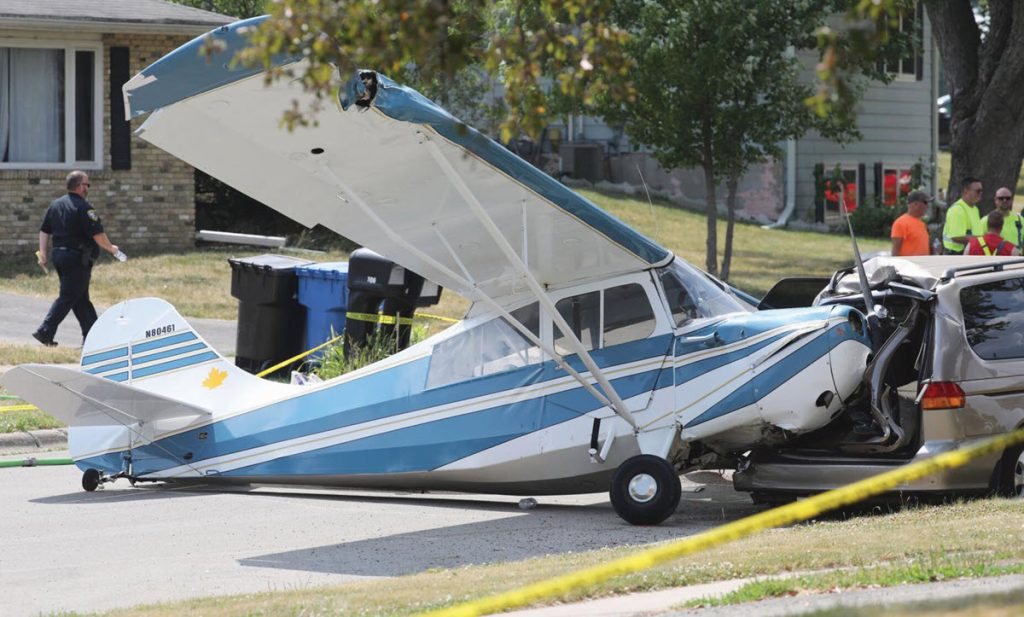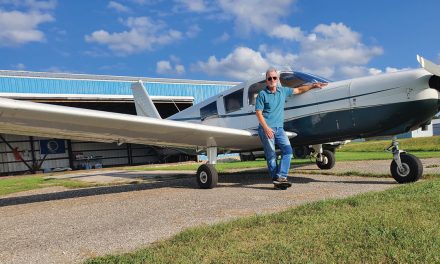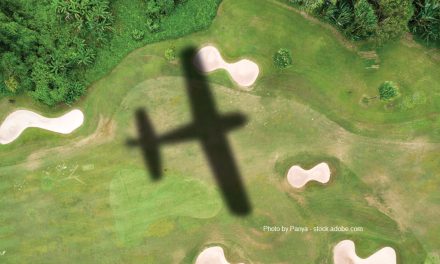By Michelle Adserias
July 21, 2023, was a beautiful day in Waunakee, Wisconsin. The sun was shining in a cloudless sky over the Waunakee Airport as Troy Ribble and his father, Rick, climbed into a newly acquired 1960 Champion 7EC. Troy purchased the plane that morning, then both he and a mechanic thoroughly checked it over to make sure everything was in solid working order. The mechanic even commented on how well-maintained it was and that it looked fantastic.
Within 40 seconds of take-off, before the airplane had even reached the airport boundaries, the engine began to lose power and died. Troy’s first thought was, “Are you kidding me? You’re gonna do this here?”
He had only a brief moment to assess the situation since they were still quite low to the ground. Troy glanced around for a place that looked reasonably open and reasonably quiet. There were no open fields or open streets – just neighborhoods. He saw a street to his left where there were no moving cars or pedestrians, so he decided to put his plane down there. He managed to avoid power lines, trees, and houses. He didn’t hit anything until they were on the ground.
“All things considered, it was quite miraculous,” shared Troy, “There was very little property damage.” The plane hit some small branches, a street sign, and two parked vehicles, coming to a stop just 4/10 of a mile from the airport.
“I remember only looking at where I was landing and maintaining a safe airspeed so we didn’t lose lift on the wings and fall out of the sky,” Troy said. Though he was aware when the engine stopped running, Rick, also a pilot, told Troy when the propeller stopped spinning – something he was too preoccupied to notice. Both Troy and Rick walked away with only a few cuts and bruises and some sore muscles. They were thankful the Champion protected its passengers from serious injury – one of the important things it was designed to do – and that no one on the ground was injured. Sadly, the Champion was a total loss.
Prepare For The Unexpected
Troy attributes the success of his landing to proficiency in the airplane. Though it was new to him, he had recently (within a few weeks of the crash) practiced certain simulated engine-failure-on-take-off procedures in a similar plane, a 1946 Aeronca Champ. In the midst of this harrowing, real-life situation, he was confident he could handle it.
Because he had practiced, though not at the low-altitude situation he found himself in, he knew what he and the plane could and couldn’t do. There are only two options in this situation. A pilot can make a 180-degree turn back to the airport or make an emergency landing. Experience told Troy he could not make it back to the airport, so he put the plane down.
Standard Procedure
In any aviation emergency, standard procedure is aviate, navigate and communicate. Troy explained, “I got through aviate and navigate but never got a chance to communicate.” He was on the ground before he had time to contact anyone.
An NTSB investigation is underway to determine the cause of the crash, but so far nothing conclusive has been discovered. Part of the problem is the airplane’s remarkable condition. Nothing obvious went wrong. Troy would like to have some answers about what caused the engine failure and subsequent crash – and whether he handled the landing in the best possible way. Right now, the focus is on checking the fuel system for any irregularities.
When asked whether the emergency landing had made him nervous about flying, Troy responded, “It took mental and emotional energy to go up a number of times afterwards.” Though he was confident of his skills, he wasn’t sure he wanted to fly, at least at first. “I successfully navigated one of the most significant nightmares a pilot could ever face, but there was nothing enjoyable about the experience.”
Troy hasn’t let this experience keep him grounded. He continues to fly his 1969 Piper PA-28R-200. He feels less apprehensive each time he takes to the skies.
